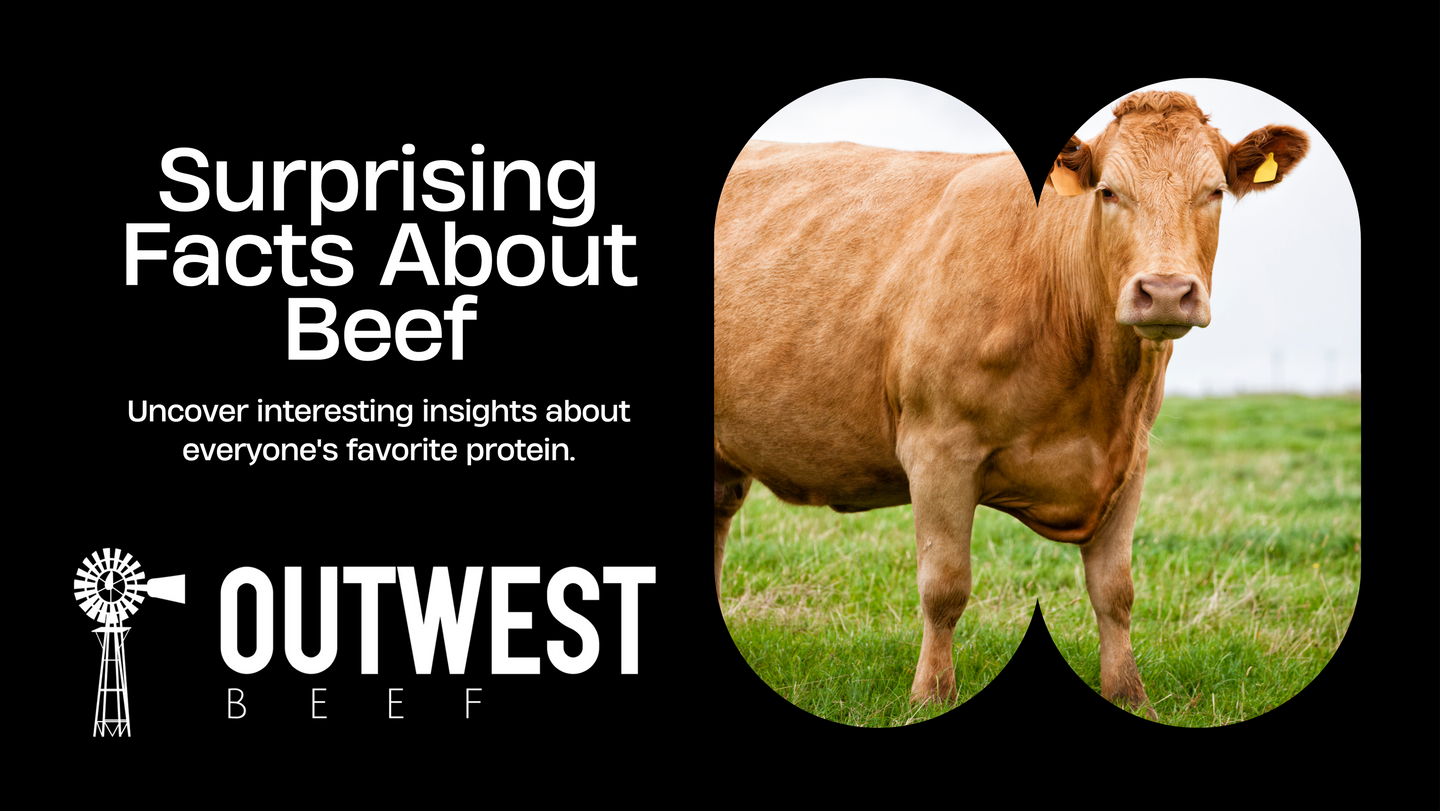Here are 10 facts about beef that may surprise you:

10 facts about Beef that the Average Person doesn't Know
Grading System: Beef is graded based on quality factors like marbling, color, and maturity. The USDA grades beef as Prime, Choice, Select, etc. Prime grade beef has the highest amount of marbling, making it more tender, juicy, and flavorful.
Aging Process: Beef can be dry-aged or wet-aged. Dry-aged beef is stored in controlled conditions, allowing natural enzymes to break down the meat for enhanced flavor and tenderness. Wet-aged beef is vacuum-sealed and aged in its own juices for a shorter period.
Cuts Beyond Steak: While steaks like ribeye, sirloin, and filet mignon are popular, there are numerous other cuts like hanger steak, tri-tip, and flat iron steak that offer great flavor and tenderness when prepared properly. Beef offers a wide array of cuts, flavors, and preparation methods, allowing consumers to explore and enjoy diverse culinary experiences, from tender steaks to slow-cooked braises, enhancing meal enjoyment and variety.
Beef Production’s Carbon Footprint: Contrary to popular belief, Beef production does not contribute significantly to greenhouse gas emissions. Cows produce only 2% of GHG emissions in the U.S. while vegetables and other crops produce 5% of GHG emissions in the U.S.. The methane released from cattle digestion expires after 10 years, while GHG emissions from your car impact the earth for over 100 years.
Nutritional Diversity: Beef is a good source of various nutrients, including protein, iron, zinc, and B vitamins. However, it also contains saturated fats, so moderation in consumption is often recommended. There are many nutrients that you can only get in beef. Beef is a high-quality protein source, containing essential nutrients like iron, zinc, vitamin B12, and other micronutrients vital for overall health, muscle development, and immune function. Beyond being a protein source, beef contains essential nutrients like creatine, which aids in muscle growth and strength, and conjugated linoleic acid (CLA), which may have health benefits including reducing body fat.
Global Preferences: Different cultures prefer different cuts of beef. For instance, in the United States, cuts like ribeye and T-bone are popular, while in Japan, cuts like Kobe and Wagyu beef are highly prized. Various cattle breeds exist globally, each with unique characteristics impacting meat quality. Breeds like Angus, Hereford, Wagyu, and Charolais are known for specific meat qualities and flavors. Each breed has unique characteristics, allowing for a wide range of flavor profiles, textures, and culinary experiences when it comes to beef.
Cooking Temperatures: Beef’s safe cooking temperature varies by cut and desired doneness. For steaks, the USDA recommends 145°F for medium-rare, 160°F for medium, and 170°F for well-done. Ground beef should reach an internal temperature of 160°F.
Beef Aging and Tenderness: Aging beef allows natural enzymes to break down tough connective tissues, enhancing tenderness. However, excessive aging can lead to spoilage or an overly strong "aged" flavor.
Economic Contribution: Beef production contributes significantly to the economy by providing jobs, supporting rural communities, and contributing to agricultural sustainability and growth. Cows convert food waste or unusable resources like grassland into food. In many cultures, cows provide the foundation for life. Without cows, people could not survive in certain climates.
Community and Tradition: Many farming families have passed down generations of expertise, traditions, and knowledge about raising cattle, contributing to the cultural fabric of many societies. Beef farming often supports rural communities by providing employment opportunities and fostering agricultural development, playing a crucial role in rural economies.
Beef By-Products: Beef production yields various by-products used in numerous industries, such as leather for goods like shoes and bags, gelatin for food and pharmaceuticals, and tallow for candles, soaps, and cosmetics.
Continuous Improvement: Beef producers continually strive for improved practices, adopting new technologies and methods to enhance animal welfare, minimize environmental impact, and produce higher-quality beef. Many beef producers adhere to rigorous quality assurance programs, ensuring safe handling, ethical practices, and high-quality beef products for consumers.
If you're looking for a local source of Beef in Northern California, check out our shop for some great options
